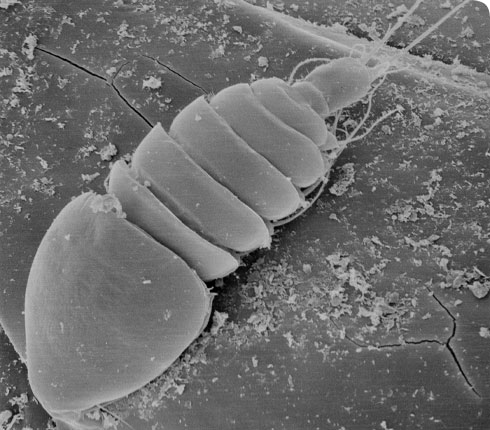Biology
Life cycle
The life cycle of tantulocaridans is unusually abbreviated for a crustacean.
Most crustaceans have several development stages in the life cycle which are separated by moults, but tantulocaridans do not exhibit any typical moults.
There is a larva - the tantulus larva - a tiny free-swimming stage less than 100 microns in length and consisting of a head followed by an 8-segmented trunk, the first six of which carry paired swimming legs. Amazingly the head has no limbs - no antennae, no mandibles, and no maxillae. All it carries is the oral disc - about 15 microns in diameter.
This larva is the infective stage and it locates an appropriate host, probably by waiting near the surface of the sediment until a tanaid approaches. During infection it fixes itself permanently to the host using an adhesive secreted onto the surface of the oral disc. Once glued to the host the parasite commences feeding and begins to grow.
The larva can develop along alternate pathways, one sexual and the other asexual.
In the asexual pathway, the larva develops into sac-like female that remains stuck to its host by the larval oral disc. Within its trunk sac, eggs develop into a new generation of larvae that are released into the environment once mature.
In the sexual pathway, the larva produces an expanded trunk sac behind its head, within which a free-swimming adult male or adult female develops. These free-swimming, adult stages are much larger than the tantulus larva and consist of an elongated head region and a posterior trunk carrying 2 pairs of legs in the female but 6 pairs in the male. Mating takes places between these adults producing fertilised eggs.
Fertilised eggs might hatch directly into tantulus larvae, or possibly another kind of larva as yet undescribed.
